What's New
Displaying results 4361 - 4370 of 4914

Resource | Publications,
Women constitute roughly 49% of Afghanistan's 23.3 million people. The development of women's human capital is strongly articulated in principle 5 of the Afghanistan Compact (AC) and highlighted as one of the 3 goals of gender equity in the Interim Afghanistan National Development Strategy (I-ANDS). The importance of this imperative cannot be overemphasized because women constitute an enormous reservoir of human resources that could significantly bolster the government's effort to rebuild the nation.
The current situation of women in the country presents a serious challenge to human development. The women of Afghanistan are among the worst off in the world, both in comparison to Afghan men and with women of most countries.
The advancement of women has always been central to our pursuit of national peace and reconstruction. From the Bonn Agreement to the Constitution, Afghanistan Compact and Interim Afghanistan National Development Strategy (I-ANDS), we have remained steadfast in our commitment to pursue gender equality and the empowerment of women in all spheres of life. As articulated in the I-ANDS, it is the goal of Government to eliminate discrimination against women, develop their human capital, and promote their leadership in order to guarantee their full and equal participation in all aspects of life.
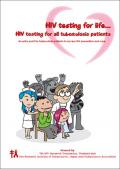
Resource | Publications,
This book is made for promoting every TB patient's access to HIV counseling and testing so that they can have equal access to HIV prevention and care which ultimately lead to reducing deaths and increasing survival of people infected by TB and HIV. It includes photos of HIV positive TB patients who have disclosed their HIV status to the public. Health staff can open the pages which contain photos and stories of these patients and show them to other patients. This may help to reduce self-stigma and may increase hope and strength for patients to accept HIV testing.
This book includes evidence from Thailand and other countries’ research which have been published in the international journals. Health staff may also use this evidence to convince the policymakers to recognize the importance of offering HIV counseling and testing for TB patients.
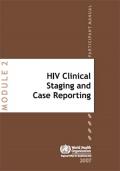
Resource | Tools,
The module is divided into seven units. The units are convenient blocks of material and should be studied in the order in which they are presented. In addition, there are several appendices at the end of the module. The last three appendices guide surveillance officers through the process of developing an action plan and operations manual for establishing and maintaining an HIV case-based surveillance system. Throughout the module, small group discussion questions are designed to assist in the development of the action plan and operations manual. The expected outcome from this module is an enhanced understanding of HIV case-based surveillance as well as a completed (or nearly complete) action plan and operations manual.

Resource | Publications,
This is the report of the third joint antiretroviral treatment (ART) programme review for Thailand since the programme started in 1992. Based on the recommendations of the first review held in 1995, the Ministry of Public Health (MOPH), Thailand started a pilot programme for the prevention of mother-to child transmission (PMTCT) of HIV in north-east and northern Thailand, along with the establishment of a HIV/AIDS clinical research network. This was followed, in 2000, by large-scale implementation of the national PMTCT programme in public hospitals. The second joint programme review, conducted in July 2000, recommended expansion of quality ART services to cover all government hospitals following the example of the national PMTCT programme.
This ART programme review was conducted from 12–19 October 2004 by a team of three national and 10 international experts, identified in consultation with the national authorities.
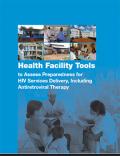
Resource | Tools,
To introduce HIV-related services in health and community facilities, it is essential that a rapid and comprehensive process of appraisal and implementation planning occur for each site. This process includes several steps to ensure that the proper contacts are made, accurate data are gathered and used for program planning, and comprehensive program planning occurs. Participants from technical and program support areas should be involved in all aspects of the process. This manual outlines the rapid appraisal and implementation planning framework used to plan service delivery in FHI-supported sites and provides tools to be used along the way.

Resource | Publications,
The Northern Economic Corridor Project (National Route 3) upgraded a 220-kilometer road in the Lao People’s Democratic Republic (Lao PDR) linking Thailand and the People’s Republic of China (PRC). The project incorporated awareness and prevention education programs on human immunodeficiency virus (HIV), and drug and people trafficking in several aspects of its operations with the goal of mitigating risk and adverse outcomes associated with the road construction.
Route 3 passes through 94 villages and towns in the poor, northwest region of the Lao PDR. Road upgrading will bring significant economic development to two of the country’s poorest provinces (Louang Namtha and Bokeo).
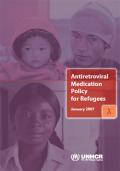
Resource | Publications,
The United Nations High Commissioner for Refugees’ (UNHCR) ARV policy for refugees is designed to offer guidance to UNHCR and its implementing and operational partners as well as to host Governments on the provision of the different forms of available ARVs, namely short-term preventive ARVs to avoid mother-to-child transmission (PMTCT) and post-exposure prophylaxis (PEP) to reduce the likelihood of HIV transmission in certain situations as well as long term ART. This document sets the objectives as to the availability of ARVs and ART for refugees and outlines the scope of engagement and the responsibilities of UNHCR offices in working towards the achievement of these objectives.
The document complements earlier UNHCR policy papers and guidelines related to HIV/AIDS and is consistent with international recommendations relating to ART. As with all HIV and AIDS policies and programmes,ARV interventions must be linked to prevention, care and support programmes.
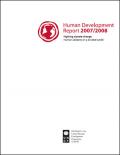
Resource | Publications,
Delivered in a sermon on social justice four decades ago, Martin Luther King's words retain a powerful resonance. At the start of the 21st Century, we too are confronted with the “fierce urgency” of a crisis that links today and tomorrow. That crisis is climate change. It is still a preventable crisis—but only just. The world has less than a decade to change course. No issue merits more urgent attention—or more immediate action. Climate change is the defining human development issue of our generation. All development is ultimately about expanding human potential and enlarging human freedom. It is about people developing the capabilities that empower them to make choices and to lead lives that they value.
If the world acts now it will be possible—just possible—to keep 21st Century global temperature increases within a 2°C threshold above pre-industrial levels. Achieving this future will require a high level of leadership and unparalleled international cooperation.

Resource | Publications,
At the G8 meeting in Gleneagles in 2005 and again at the United Nations UNGASS session in 2006, world leaders promised to come as close as possible to providing universal access to AIDS treatment and prevention by 2010. Estimates of HIV incidence and prevalence will change, but by any account, today several million people in desperate need of AIDS treatment do not have access to it. And at the current pace of growth in treatment delivery, several million will not have access by the end of 2010. Broken promises will mean millions of deaths.
Scale up of AIDS treatment is driving unprecedented expansion of health delivery and, in the process, identifying critical challenges to health systems as well as practical solutions to address them. This report identifies many ways in which governments and global agencies must act to correct systems essential to delivery of health. In the area of antiretroviral drug access—a special focus of this report—our research found that in many countries drug registration, procurement, and supply management systems are inadequate, drug stock-outs are common, and most people are not being treated with ARV regimens that are consistent with recent WHO recommendations for improved first-line and standardized second-line treatment combinations.

Resource | Tools,
The World Health Organization (WHO) recommends that national programmes establish capacity to provide early infant virological testing for HIV given the high risk of death by 2 years of age for infected infants and the increasing availability of paediatric antiretroviral treatment in many resource limited settings. Currently available assays and diagnostic platforms that should be considered by MOH programs for early infant HIV diagnosis include appropriately ongoing externally validated commercially and non-commercially available tests for HIV DNA (PCR) or HIV RNA.
This document is a guidance note on consideration of options for selection of technology for early diagnosis of HIV in infants in resource-limited settings.





